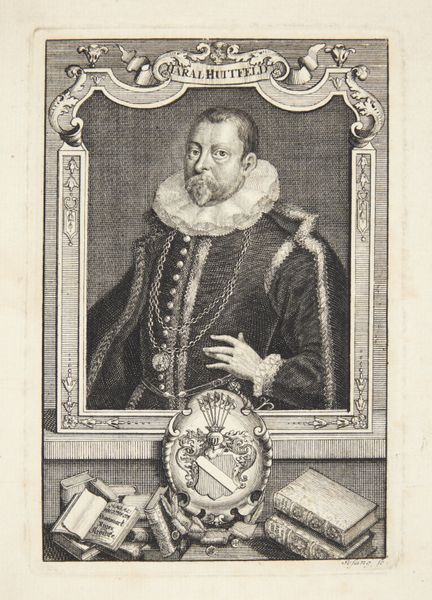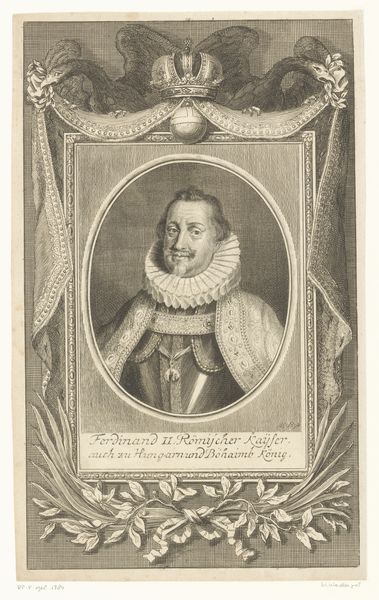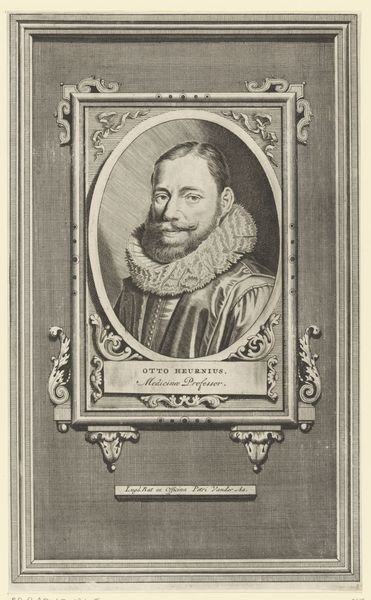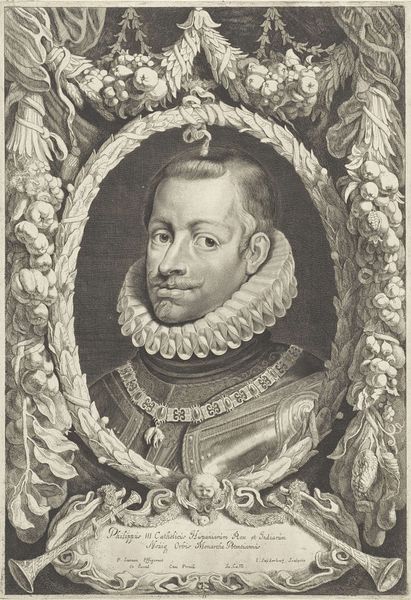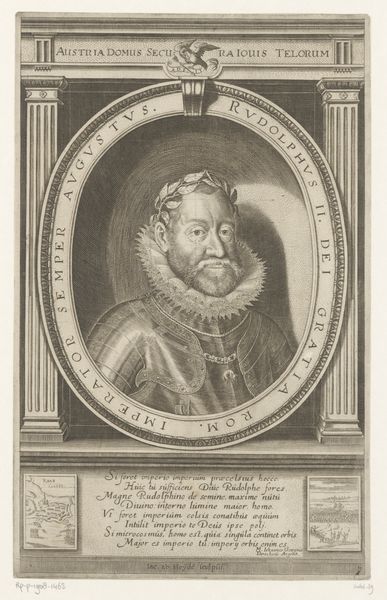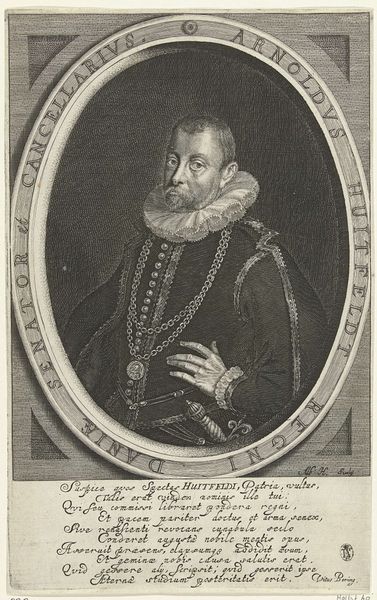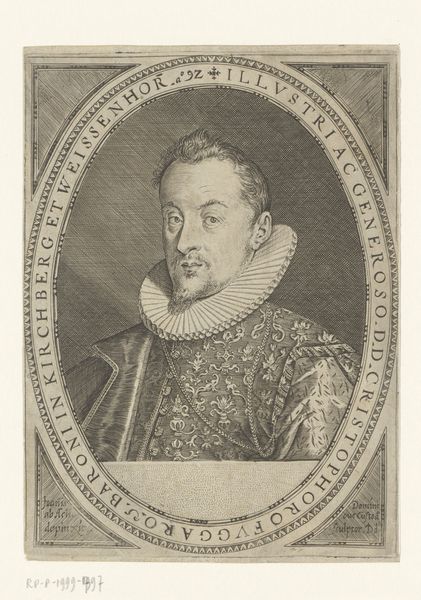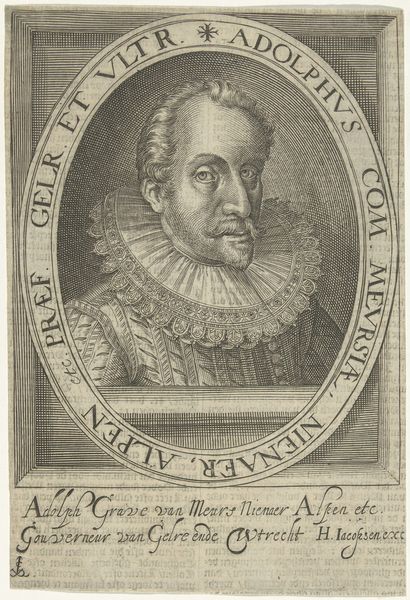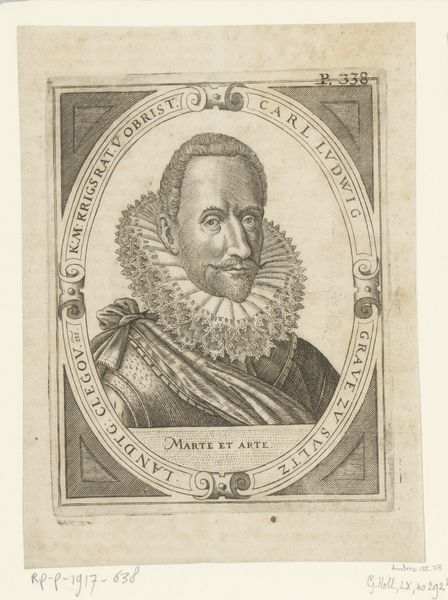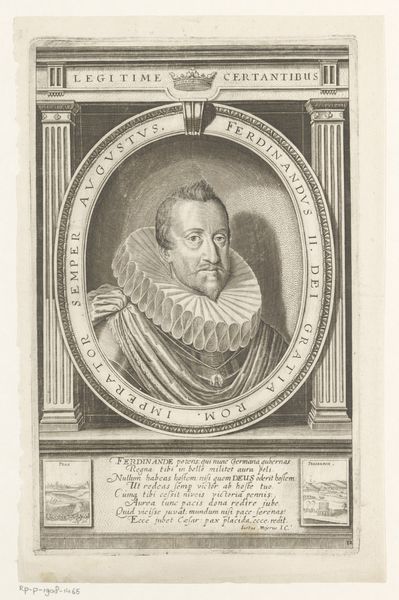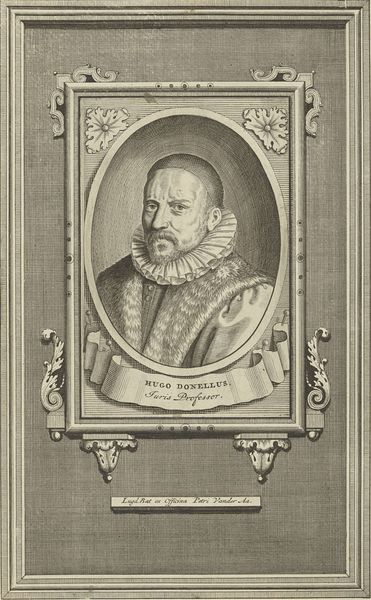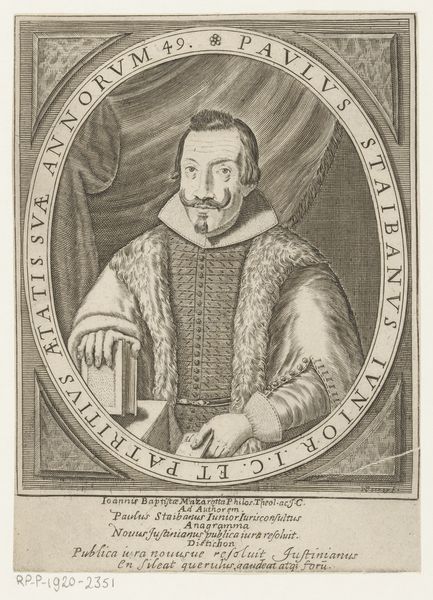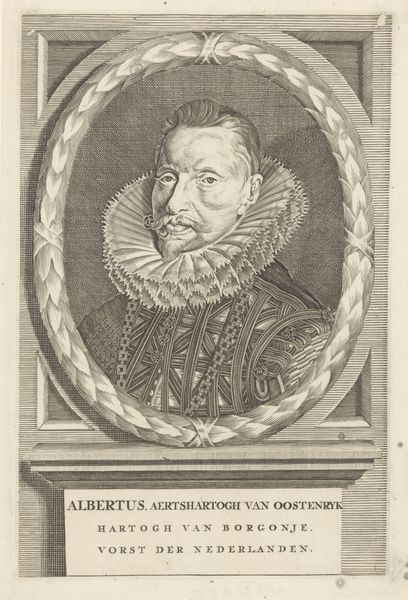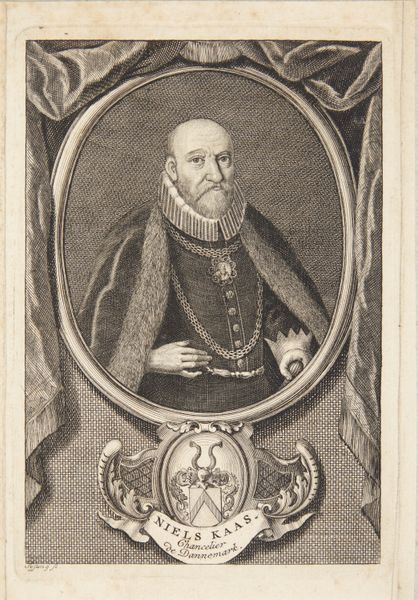
print, engraving
#
portrait
#
aged paper
#
toned paper
#
baroque
# print
#
old engraving style
#
history-painting
#
engraving
Dimensions: height 372 mm, width 260 mm
Copyright: Rijks Museum: Open Domain
This is Philip van Gunst’s portrait of James I of England, an engraving housed here at the Rijksmuseum. This print exemplifies how images of monarchs were carefully constructed to convey power and legitimacy. Made in the Dutch Republic, a rising power with a republican government, this portrait depicts the Stuart king of England, Scotland, France and Ireland within a formal, classical framework. The use of Latin in the inscription, the laurel wreath, and the architectural pedestal, evoke the authority of ancient Rome, which was often used to validate contemporary rulers. Yet, engravings like this also circulated within a burgeoning print market, making images of monarchs more accessible to a wider public. Understanding this portrait requires us to consider the complex relationship between artistic production, political power, and the emerging public sphere of early modern Europe. Examining sources like state papers, pamphlets, and contemporary histories can shed light on how such images shaped perceptions of monarchy during this transformative period.
Comments
No comments
Be the first to comment and join the conversation on the ultimate creative platform.
